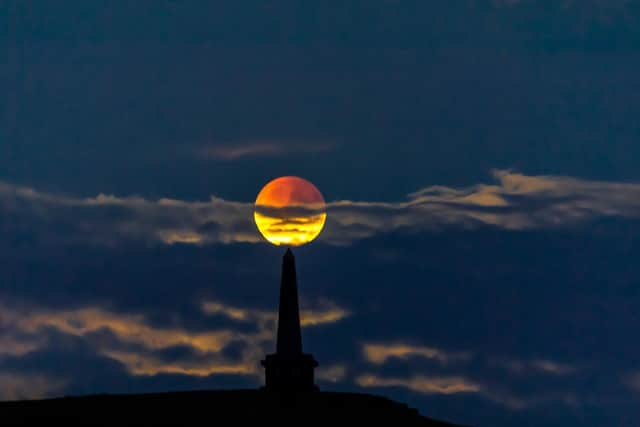Partial solar eclipse set to be visible in Yorkshire this week
On Thursday morning (Jun 10), skygazers will be able to see nearly a third of the Sun being blocked out by the Moon in what is known as an annular eclipse.
An annular eclipse occurs when the Sun and Moon are exactly in line with the Earth, but the apparent size of the Moon is smaller than that of the Sun.
Advertisement
Hide AdAdvertisement
Hide AdThis causes the Sun to appear as a very bright ring, or annulus, in a phenomenon dubbed as the “ring of fire”.


However, observers in the UK and Ireland will see a crescent Sun instead of a ring, as this will be a partial eclipse.
Dr Emily Drabek-Maunder, an astronomer at the Royal Observatory Greenwich, said: “This ‘ring of fire’ will be seen from Russia, Greenland and northern Canada. From the UK, the annular solar eclipse will be a partial eclipse, meaning that we’ll only see the Moon pass in front of a small part of the Sun.”
She said the phenomenon will begin at 10.08am on June 10 in the UK, with the maximum eclipse occurring at 11.13am, when the Moon will cover close to one-third of the Sun.
The partial eclipse will end at 12.22pm.
Advertisement
Hide AdAdvertisement
Hide AdEven though a large part of the solar disc will be covered, looking at the partially eclipsed Sun without appropriate protection can cause serious and permanent damage to the eyes.
Dr Drabek-Maunder added: “The eclipse from the UK will only be visible with certain techniques and optical aids. Never look at the Sun directly or use standard sunglasses, it can cause serious harm to your eyes.”
It is also not wise not to look at the Sun through binoculars, telescopes or a telephoto lens on an SLR camera.
Dr Drabek-Maunder suggests using a simple pinhole projector, solar eclipse viewing glasses – which can be purchased online, or special solar filters – which can fit on telescopes, to observe the eclipse.
Advertisement
Hide AdAdvertisement
Hide AdShe said: “You can make a projector by poking a small hole into a piece of card. Hold the card up to the Sun so that light shines through the hole and on to a piece of paper behind the card.
“You will be able to see the shape of the Sun projected on to the piece of paper and watch its shape change as the Moon passes in front of the Sun.”
The Royal Observatory Greenwich is also live-streaming the eclipse on its website and YouTube channel.